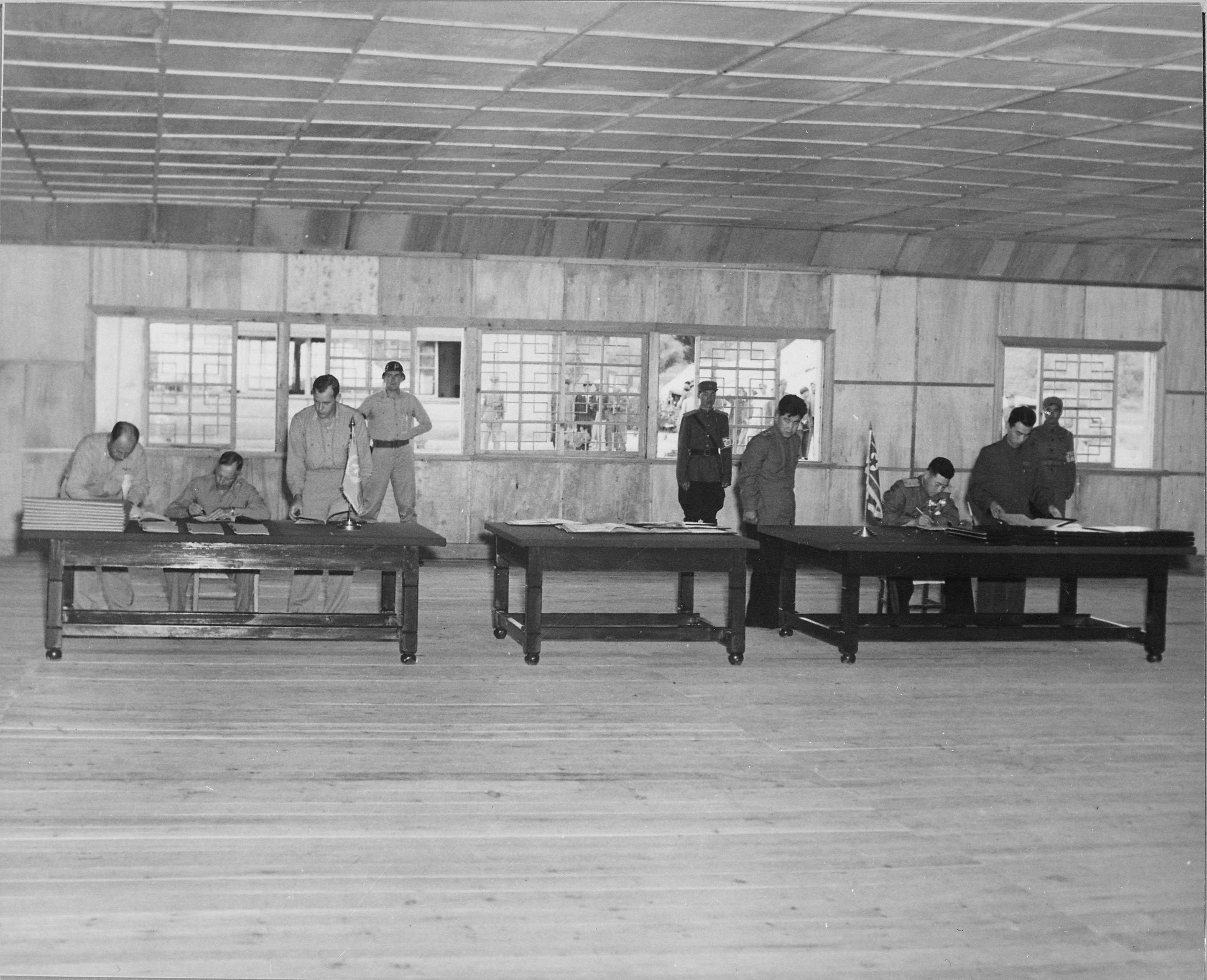Phase 4 & 5: UN Counteroffensive & Armistice Talks
By early 1951, President Truman ordered the dismissal of General MacArthur's command of the Korean War due to insubordination, replacing him with General Matthew Ridgway.6,14 Part of this dismissal was also due to the US leaders thinking that General MacArthur would provoke the war further, as General MacArthur aimed for a total victory, even suggesting to use of a nuclear bomb against China.6 This could have led to a direct conflict against China and the Soviet Union, which was what President Truman and other American officials wanted to avoid.6
General Ridgway was then authorized to handle the Armistice talks. They began in Kaesong, North Korea, on July 10, 1951, after the allies of both North and South Korea—China and the Soviet Union on one side, and the United States and UN allies on the other—were no longer interested in continuing.8 American officials also feared that this war would extend to a more devastating one with Russia and China, so they pushed for the armistice.6 However, the talks persisted for two more years, with those involved maintaining active defensive positions and offenses.8
Finally, on July 27, 1953, the Armistice agreement was signed, and the fighting stopped twelve hours later.8

